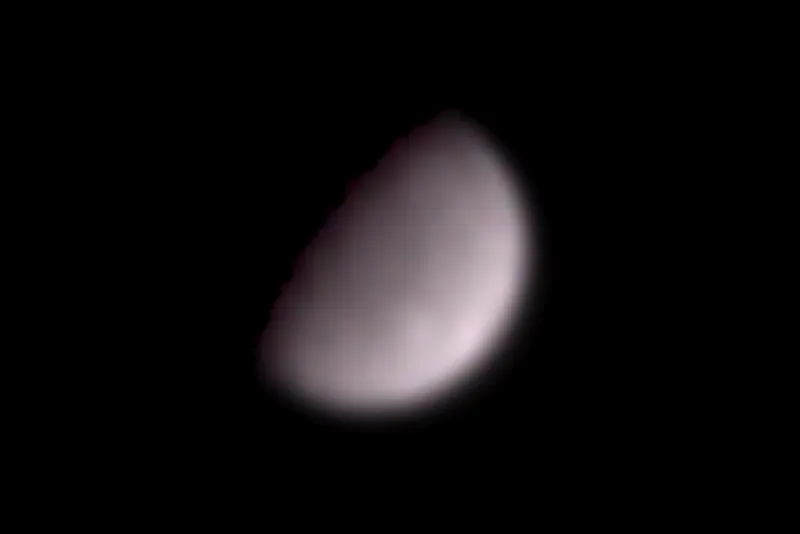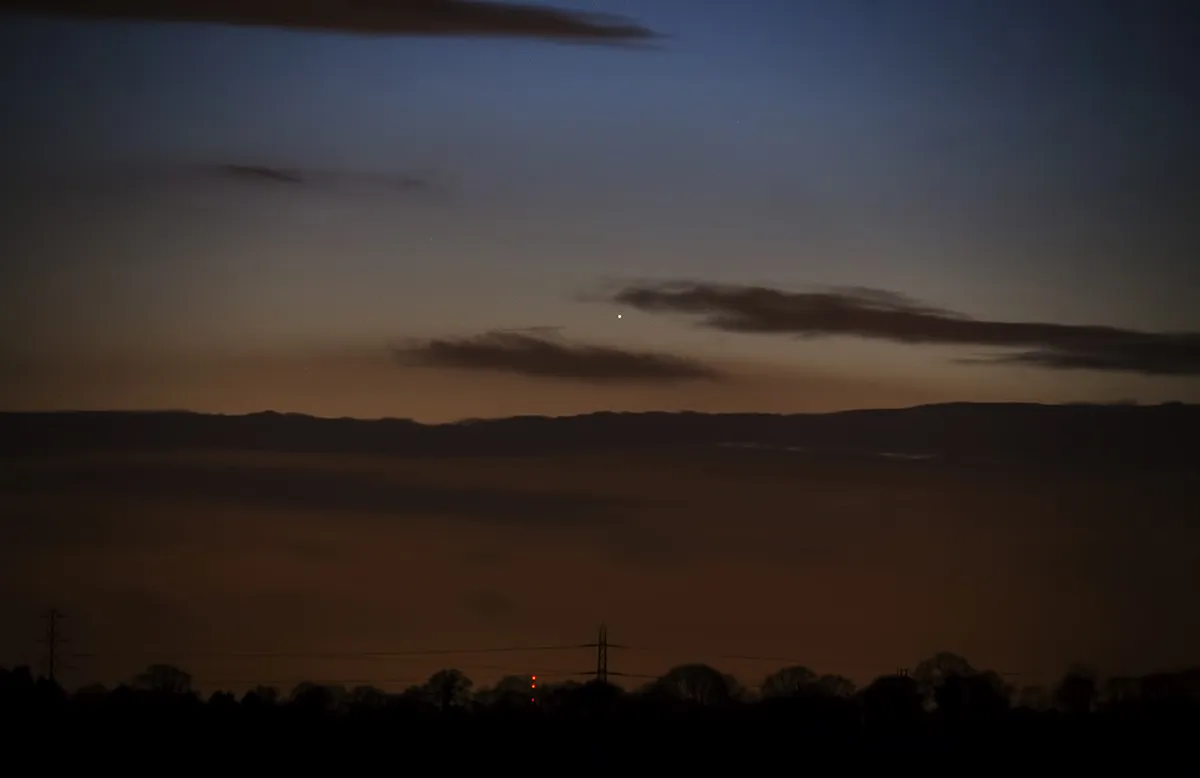Mercury isn’t visible at the start of the month when it will be an evening object setting before the Sun and too faint to be seen under daytime conditions.
Inferior conjunction occurs on 6 September when Mercury lines up with the Sun, passing 3.8° to the south of the Sun’s centre.
After inferior conjunction, Mercury emerges into the morning sky.

Unlike the situation in the evening sky – where the shallow angle of the ecliptic with the western horizon at sunset forces the evening twilight planets into a poor position for observing – in the morning sky, the ecliptic angle with the eastern horizon at sunrise is steep.
Consequently, Mercury’s morning appearance will be much more favourable.
Having said this, at first Mercury will be difficult to see against the bright dawn twilight.
Things improve by the time of greatest western elongation on 22 September.
That morning it shines at mag. –0.3 and rises over 100 minutes before the Sun.
At greatest western elongation, Mercury appears separated from the Sun by almost 18°, a figure that then begins to decrease.

Despite this, Mercury remains good for the rest of September.
It increases in brightness, reaching mag. –0.9 on the morning of 30 September.
On this date, despite closing in on the Sun, Mercury’s steep position means it rises 90 minutes before the Sun.
Being an inferior planet, Mercury shows phases.
Through the eyepiece, it appears a fraction under half-lit on the morning of 22 September and 7 arcseconds across.
By the end of the month, its phase will have increased to 79%-lit, its apparent diameter having decreased to 5 arcseconds.
How to see the planets in September 2023

Mercury
- Best time to see: 22 September, from 1 hour before sunrise
- Altitude: 7° (low)
- Location: Leo
- Direction: East
- Features: Phase, surface markings
- Recommended equipment: 150mm or larger
Venus
- Best time to see: 30 September, 05:15 BST (04:15 UT)
- Altitude: 18°
- Location: Leo
- Direction: East
A morning object shining at mag. –4.3 at the start of the month and rising almost 2 hours before the Sun. As Venus approaches greatest western elongation next month, its position improves; by 30 September it rises 4 hours before the Sun, allowing views against astronomically dark skies for over 2 hours.
Through the eyepiece, Venus appears 11%-lit and 49 arcseconds across on 1 September. It is 35%-lit and 32 arcseconds across by month’s end.
Mars
Mars is not visible in September 2023.
Jupiter
- Best time to see: 30 September, 05:15 BST (04:15 UT)
- Altitude: 52°
- Location: Aries
- Direction: South
A prominent morning planet, shining at mag. –2.5 in southern Aries. Visited by a bright waning Moon on
the mornings of 4 and 5 September, it just fails to reach its highest position, due south, under dark sky conditions on these dates.
This occurs from the middle of the month, Jupiter reaching 52° altitude from the centre of the UK, lifting it well above low-level turbulence.
Saturn
- Best time to see: 1 September, 22:50 BST (21:50 UT)
- Altitude: 24°
- Location: Aquarius
- Direction: South
Saturn was at opposition at the end of August and remains well-placed for observation. Currently in Aquarius, Saturn reaches its highest point in the sky, due south, all month under dark sky conditions.
Through a telescope, Saturn's rings currently have their northern face tilted towards us by around 10°. A bright 91%-lit waning gibbous Moon sits 3.3° south of mag. +0.5 Saturn as the pair approach setting on the morning of 27 September.
Uranus
- Best time to see: 30 September, 03:50 BST (02:50 UT)
- Altitude: 55°
- Location: Aries
- Direction: South
Morning planet Uranus reaches its highest altitude, due south, under dark sky conditions from the middle of the month. Jupiter and Uranus appear 7.5° apart on the morning of 7 September, the gap increasing to 8.2° by the end of the month.
Uranus shines at mag. +5.7 and although technically visible to the naked eye from a dark site, is best confirmed using binoculars.
Neptune
- Best time to see: 20 September, 01:00 BST (00:00 UT)
- Altitude: 34°
- Location: Pisces
- Direction: South
Neptune reaches opposition on 20 September. The planet achieves 35° when due south under dark sky conditions all month long. A telescope is required to show its tiny blue-hued disc.
At mag. +7.8, Neptune isn’t visible to the naked eye, requiring at least a pair of binoculars to see.
This guide originally appeared in the September 2023 issue of BBC Sky at Night Magazine.
